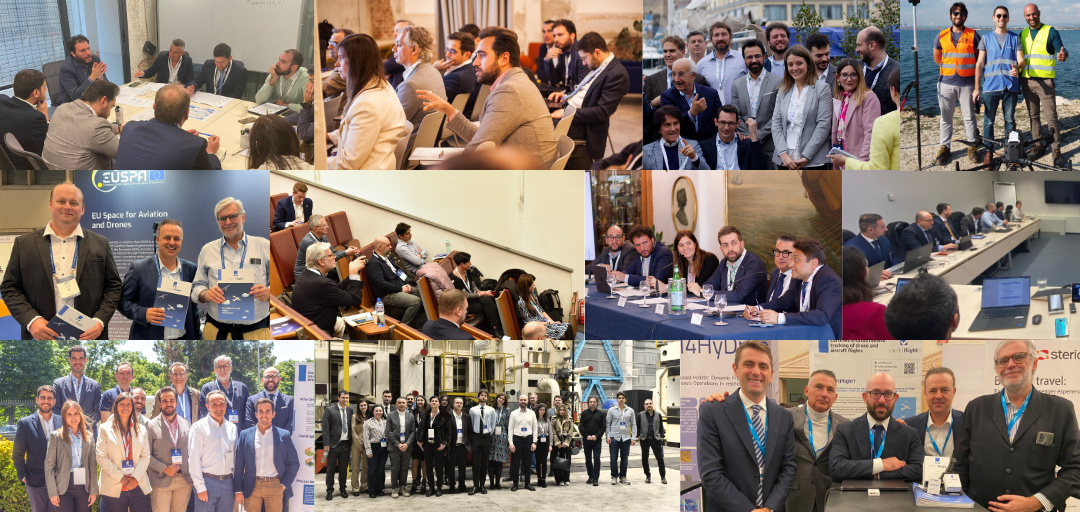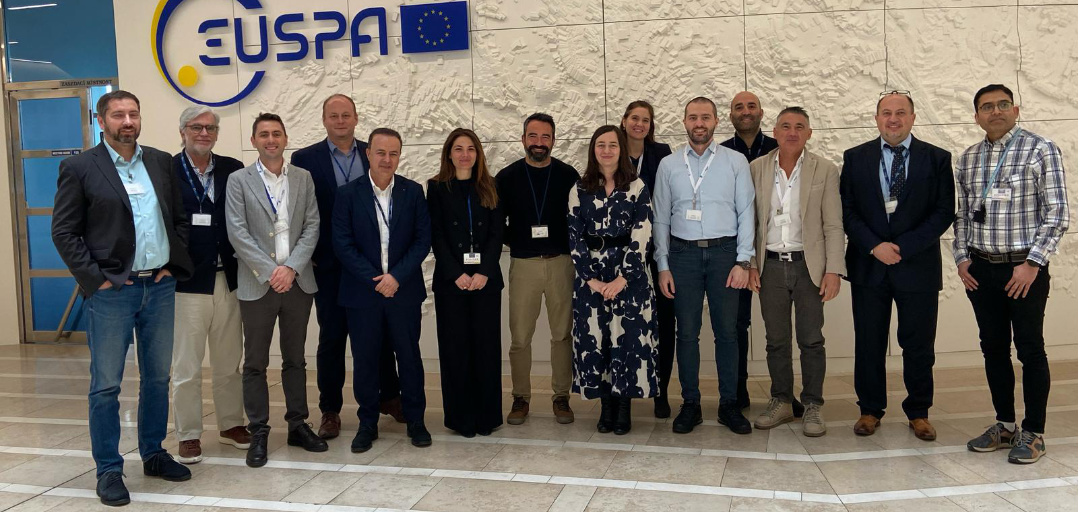Certiflight successfully completes the first phase of the project with the celebration of its final meeting in Prague
April 21, 2025
The European project Certiflight has successfully reached the end of its first development phase, marked by a final meeting held in Prague. The event brought together nearly twenty partners, along with representatives from the European Union Agency for the Space Programme (EUSPA), in a session dedicated to reviewing progress, assessing challenges overcome, and outlining future steps towards the potential commercialisation of the solution.
Throughout this phase, Certiflight has focused on four strategic objectives, which have guided its technical and operational development. All objectives have been successfully achieved, laying a firm foundation for the system's future.

1. Liability chain for UAS operations
One of the primary goals was to ensure the traceability and accountability of drone operations – a crucial element for authorities overseeing airspace safety. Certiflight developed a system capable of logging and authenticating flight information, offering verifiable evidence in the event of legal disputes.
Verification and validation tests confirmed the reliability of the system under various conditions. A total of 26 test cases were carried out, with over 10 hours of flight time across multiple scenarios. These results showed the robustness and adaptability of the technology. A major milestone was the successful implementation of Direct Remote ID in the UTM Box device, enabling the transmission of all required regulatory data via Bluetooth.
Over 100 experts -including UAS operators, general aviation pilots and civil authorities- have evaluated the system, providing positive feedback regarding the legal validity of the generated flight reports.

2. Mission data traceability and certification
Another key pillar of the project involved developing a technology capable of capturing mission data with certified origin and integrity, linking PVT-certified information with data gathered from external sensors. To enable this, Certiflight developed a platform offering real-time data acquisition, statistics, smart contracts, and a dedicated public landing page for anonymised data access.
Several valuable insights emerged from this phase. The platform was found to be highly user-friendly, allowing for intuitive configuration, real-time visualisation of flight paths and data, and clearly presented reports. Data integrity is ensured within the Certiflight environment, while data confidentiality is safeguarded through disclaimers and anonymisation on the public page.
3. Safety for General Aviation and UAS operations
Certiflight also aimed to improve safety in low-altitude airspace operations for both general aviation and UAS. The objective was to implement effective e-conspicuity features, in line with applicable European regulations and standards.
Testing confirmed that the system can issue conflict warnings up to 40 seconds in advance. To ensure effective pilot communication, three types of messages were developed: conflict warning, avoidance suggestion, and conflict resolution confirmation. This enables pilots to receive clear, timely information to help avoid risky situations.
Designing a clear and intuitive user interface was one of the most complex challenges faced, but ultimately, the results were very positive. The Certiflight device successfully guided pilots to resolve conflicts and showed its value in operational settings.
4. Interoperability with UTM/U-space platforms
Ensuring interoperability with existing UTM/U-space platforms was another key goal. Certiflight successfully integrated its device with D-Flight, Maia UTM, and Unifly UTM, and established connections with two additional U-space technology providers during the project timeline.
Key lessons from this process highlighted that authenticated positioning is seen by stakeholders as a critical enabler for services such as long-range surveillance (LRS), dynamic separation (DLS), and advanced routing (ARS), particularly in high-security environments. Adherence to standards (ISO, EUROCAE) was also recognised as essential for adoption by UTM providers.
OSNMA Galileo role in the Certiflight solution
A cornerstone of the Certiflight technology is its use of Open Service Navigation Message Authentication (OSNMA) from Galileo. This feature enables authentication of navigation messages, ensuring they originate from Galileo and have not been altered.
On average, five OSNMA satellites were used during testing, with a maximum of ten recorded in Grottaglie. Authenticated tracking uptime was above 75% in most validation scenarios, confirming the effectiveness of the system.

The APP algorithm developed within the project met two primary objectives: providing trusted position information based on authenticated data, and maintaining accurate performance even during GNSS signal outages. The algorithm performed well in both nominal and degraded conditions.
Communication and outreach achievements
Communication strategy played a key role in disseminating the progress and achievements of Certiflight. All communication KPIs were met -and, in many cases- exceeded.
The focus on content creation for the project website and social media channels proved effective, with notable increases in page visits and online engagement. Additionally, three scientific papers and one poster were produced, bolstering the project’s visibility in academic and industry forums.
Contributions to standardisation
Standardisation efforts were essential to ensuring the interoperability, safety, and scalability of solutions within the uncrewed aviation sector. A major achievement in this area was the successful inclusion of authenticated tracking in the international standard ISO 23629-9.
This inclusion enhances resilience against spoofing and meaconing attacks by authenticating GNSS position data. The implementation proposed by Certiflight combines Galileo OSNMA with blockchain technology to guarantee data integrity.
The project has also been active in the EUROCAE Working Group 105/SG3, and will continue its efforts to ensure that features such as Identification and Authenticated Tracking are included in upcoming editions of ED-2882 and ISO 23629-8.
Business plan and market strategy
From a commercial perspective, project partners have outlined two complementary roadmaps.
The first focuses on short-term profitability, aiming for break-even within the first two years by launching a pilot with a small, focused group of customers. This approach includes participation in targeted industry events and direct outreach to local associations, allowing for early validation of product performance and return on investment.
The second roadmap emphasises long-term scalability, focusing on continued product development and feature enhancement, laying the foundation for a self-sustaining business line that fully leverages Certiflight’s technological potential.
A successful and forward-looking project
With the successful celebration of the project Qualification Review meeting, Certiflight has completed all the planned activities and shown the results achieved.

In summary, the development phase of Certiflight has exceeded expectations. The participants in the Project celebrated the many achievements, including:
- The full attainment of all four strategic objectives and associated KPIs
- Two functional hardware prototypes
- Development of the Certiflight device gateway, online portal, and blockchain verification interface
- Creation and field testing of three proprietary algorithms: APP, GSD, and CR
- A successful and impactful communication strategy
- Meaningful contributions to international standardisation
- Well-defined business models informed by stakeholder feedback
Certiflight has proven to be an ambitious and high-impact project, delivering innovative solutions that enhance safety, transparency, and interoperability in the European airspace ecosystem.

